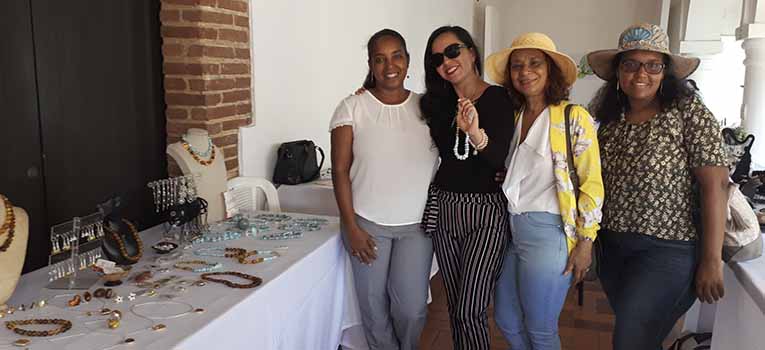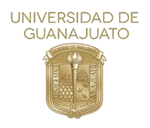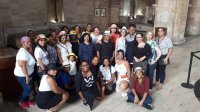
Celaya, Gto., November 7, 2019.- Dr. Perla Shiomara del Carpio, a researcher at the Celaya-Salvatierra Campus, delved into the study of the artisanal production of Chiapaneco amber in the municipality of Simojovel, a region where one of the most important amber mines in Mexico is located.
Through her research work it is possible to realize the sociocultural reality of the artisans of that region and the enormous challenges posed for all the actors involved in the extraction, transformation and commercialization of such precious resin.
And is that the artisanal production in Mexico is wide and varied since it is a mosaic of artisanal proposals that testify to the roots of the people to their regions of origin and their cultural heritage. Studying craftsmanship, helps to understand the difficulties present in the lives of communities and people dedicated to this activity, she reflected.
As part of the project: "Artisans and miners of amber from Chiapas", funded by the University of Guanajuato, through the Institutional Call for Scientific Research 2019, Dr. Perla Shiomara approached the sociocultural reality surrounding amber accompanied by the researcher, Rigoberto Martínez Sánchez, from the Universidad Autónoma de Chiapas.
She recently presented the presentation "Artisans and miners of amber from Chiapas", at the International Summit of Craftswomen (CIMA 2019), held in Santo Domingo, Dominican Republic, in which 300 women from that Caribbean country and 160 different crafts participated.
In the presentation she explained the various problems faced by amber artisans, some of them: market disarticulation, lack of organization of producers, use of natural resources in an unsustainable way, insufficient valuation of Asian presence in the region, impact of the trade on the health of miners and craftsmen, competition with various artisans, price regulation, need for constant training, lack of access to programs aimed at protecting the craftsmanship and its elaborations, lack of actions aimed at performing the extraction of amber in a sustainable way and care of the health and integrity of miners and artisans.
"Studying the field of artisanal work allows us to understand why, despite so many difficulties, it is still a space to build a sense of life and identities, as well as fulfilling various expressive and economic functions," she said.
On a visit to the National Center for Crafts in Santo Domingo, where one of the most important amber deposits in the world is located, researchers found that Mexican amber cannot compete in quantity against the volume of the Baltic, where it concentrates 80 percent of the world's known amber, but it can do so in quality, originality and beauty.
This also applies to amber from the Dominican Republic, considered to be the second largest world producer to have similar characteristics. Within the particularities and originality of Dominican amber is found to be one of the only places in the world with blue amber.
Amber from Chiapas is the pride of our state and of our country; pride that should be translated into improving the living conditions of craftsmen and miners engaged in this virtuous and dangerous trade, the researcher argued.
Photo gallery



